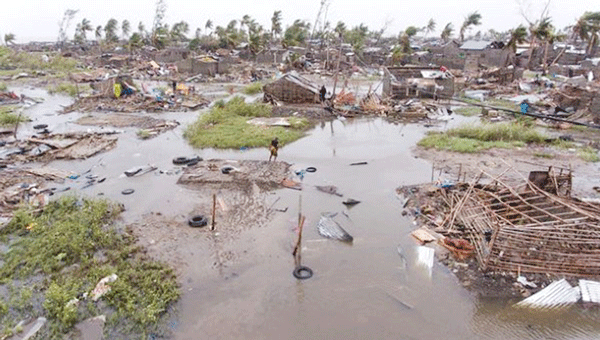By Peter Makwanya
Many children around the world are facing difficulties due to climate-related impacts and disasters. There seems to be a growing gap between children’s learning abilities and their ability to play freely, allowing them to express themselves creatively and use the environment to learn, participate in, and develop skills.
The impact of COVID-19 and cyclones and flooding changed the learning environment. Schools were closed while learners had the option to stay at home. This was the new normal. The quarantining and lockdowns prevented children from learning together and kept their movements restricted and closely watched.
Many children around the world saw their school days cut, while some stopped going to school entirely due to other circumstances. As children were still restricted by COVID-19, flash floods, cyclones, and other natural disasters that destroyed infrastructure and livestock, and left many people dead, they were unable to live their lives as they wanted.
Many families around the globe were driven into poverty, isolation, and starvation by the COVID-19 epidemic and natural disasters. Many stopped working or were denied the chance of making a living. Children were the most affected not only physically, but also psychologically, socially, and mentally. These effects caused schoolchildren to miss outdoor play, childhood games, and interaction with nature as a natural lab, to marry theory with practice.
For these reasons, United Nations International Children’s Emergency Fund estimated that, about 150 million children have been driven into poverty. Since the outbreak of the pandemic in 2020, there have been volatile, erratic, and half-backed schooling plans. There was a decrease in child-friendly environments due to the lack of active education, play and games, especially outdoors. The element of play and gaming does not just include games in general, but also green games that have many intrinsic motivations and provide sustainable co-benefits. Learning to solve environmental problems and overcome them is the goal of green or environmental games. Learning was not aware of games that promote environmental consciousness. These games have the tremendous potential to educate, inform, and inspire children to value their environment as a natural laboratory for learning.
Children grow up with the importance of learning through play and environmental games. This is not only an obligation, but a human right. Implementing the United Nations Convention on the Rights of the Child, is a strong advocate of children’s play and games. Learning and pedagogy should be integrated into learning and playing. This is in line to Sustainable Development Goal (SDG) 4 (Quality Education), as there should be strong correlation between the body and mind. It is strongly linked with SDG 3 (Good Health and Well-being).
Inactivity, loss or active learning and play meant that the environment was not explored for active skills-based learning and productive learning. Outdoor environments are known as the natural laboratory. They provide active learning, learning by doing and good stories for people to follow, making them the cradle of knowledge transfer. Because of the restrictions on movement and the effects of cyclones, including flash floods, there was no democratised learning. Children also suffered from mental health problems. The element of Play introduces pupils to ways of managing their environments, seeing nature through sustainability lenses, and reducing carbon footprints.
Children need to see, do, and explore the environment in order to retain 75% of what they have learned. This is against what they are taught, lectured to, and made to read. These co-benefits were eliminated or diminished by COVID-19, which saw schooling suspended or slowed down, and when lockdown became the preferred environment. This is the environment of discomfort and imposition that poses a threat to mental stability and mental health.
The loss of play as an ingredient in children’s holistic growth has long-term consequences for their motor and physical skills. As a healthy body requires a healthy mind, so does the loss of play. The type of play that is envisaged is different from the confined indoor play. It lacks imagination, motivation, and a verbalized natural laboratory. The natural environment provides a child-friendly platform that is rich in natural beauty and green spaces for environmental stewardship.
This is not meant to diminish the importance of information communication technology (ICTs), but integration is still key. This means that children would use ICTs to document the environment, take photographs, record themselves and make videos as they explore nature. Learning becomes meaningful, interactive, democratic, democratised, and harmonised by doing this. These opportunities, which are made possible by outdoor and interactive learning, are diluted, missed and diminished. All potential radical thinking and creativity as well as participatory behaviours and creativity have been destroyed by climate-induced hazards and threats. Children must see value in what and how they learn and be able to make decisions about the environment.
Young children see the environment as an extension of their daily lives, which allows them to expand their imaginations and minds. In this way, children will remain mentally captive if they don’t get the opportunity to interact with nature and have meaningful play.
The element of play not only contributes to environmental sustainability, participatory behaviours, but it is also essential in communication skills and vocabulary growth as part of their intellectual depth and knowledge management practices and lifelong learning transactions.
- Peter Makwanya, a climate change communicator. He writes in his own capacity. You can reach him at [email protected]


